Weekly Current Affairs (8th to 14th March 2025) | General Test Preparation for CUET UG - CUET Commerce PDF Download
Measles Outbreak in the US
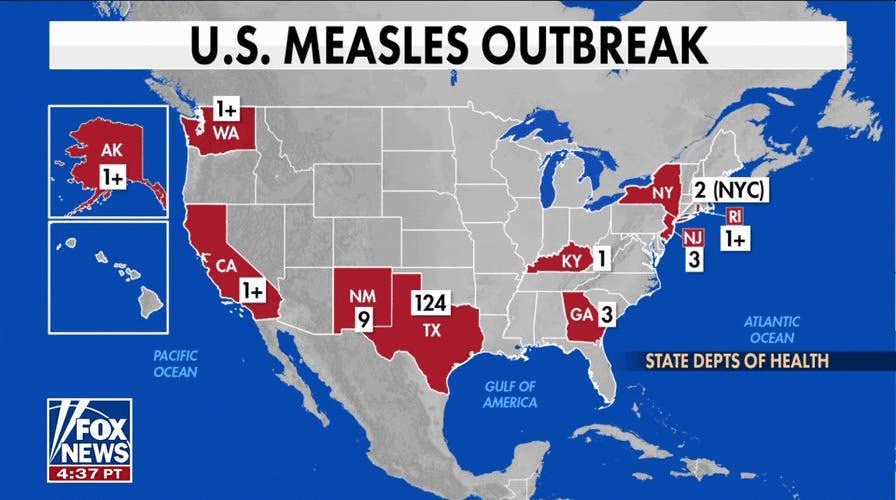 Why in News?
Why in News?
- The United States is currently facing a measles outbreak, particularly concentrated in West Texas. As of February 27, 2025, the Centers for Disease Control and Prevention (CDC) reported a total of 164 measles cases across nine jurisdictions. This outbreak, which started in late January, has tragically resulted in two fatalities, both involving unvaccinated individuals. This incident marks the first measles-related death in over a decade, raising significant concerns about vaccination rates and public health safety.
Key Takeaways
- 164 measles cases reported in nine jurisdictions as of late February 2025.
- Two fatalities linked to the outbreak, both among unvaccinated individuals.
- First measles-related death in over ten years, highlighting public health concerns.
Additional Details
- What Is Measles: Measles is recognized by the World Health Organization as one of the most contagious diseases globally. It is caused by a virus that spreads through respiratory droplets from coughing or sneezing. The virus can remain infectious in the air or on surfaces for up to two hours, and an infected individual can transmit the virus to 90% of unvaccinated close contacts.
- Who Is At Risk: The highest risk for measles is among unvaccinated individuals. Children under five years old, pregnant women, and those with weakened immune systems are particularly vulnerable to severe complications. Malnourished children or those lacking adequate vitamin A have an increased risk of complications.
- Signs and Symptoms: Symptoms typically emerge 10 to 14 days post-exposure and include cough, runny nose, sore throat, fever, and red, watery eyes. Koplik’s spots may appear in the mouth shortly before the characteristic rash, which usually begins on the face and spreads to the rest of the body, lasting five to seven days.
- Complications of Measles: Measles can lead to serious complications such as ear infections, diarrhea, pneumonia, and encephalitis. Pregnant women may face premature birth or low birth weight in their infants. According to the WHO, most measles-related deaths result from these complications.
- Treatment for Measles: There is no specific antiviral treatment for measles; management is primarily supportive, focusing on rest, hydration, and nutrition. Vitamin A supplements may be administered to lower the risk of complications, while antibiotics can be used to treat secondary infections. The illness generally lasts between 10 to 14 days without complications.
- Prevention of Measles: Vaccination is the most effective method to prevent measles. The measles vaccine is both safe and effective, typically given in two doses: the first between nine months and 15 months of age, and the second between 15 and 18 months. Achieving a vaccination coverage of 95% or more is crucial for community immunity.
In summary, the ongoing measles outbreak in the U.S. underscores the critical importance of vaccination in protecting public health. With rising cases and the unfortunate fatalities recorded, it is imperative to address vaccination rates and educate communities about the risks associated with measles.
Punjab Launches Project Hifazat
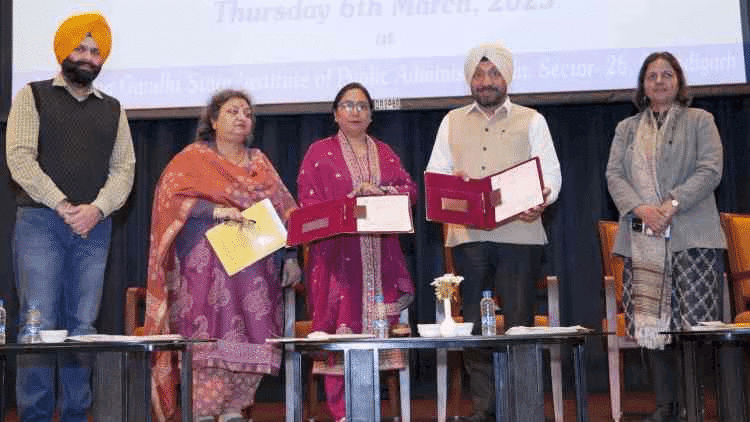 Why in News?
Why in News?
- On March 8, 2025, Punjab introduced ‘Project Hifazat,’ an initiative designed to enhance support for women and children who experience violence. This launch coincided with International Women’s Day, emphasizing its commitment to addressing domestic violence and harassment. The project is focused on establishing a comprehensive response system that encourages victims to report abuse in a safer environment.
Key Takeaways
- The primary goal of Project Hifazat is to remove the fear that inhibits victims from seeking assistance.
- The project aims to create an integrated support system for women and children in distress.
- It features a 24/7 helpline (number 181) that categorizes calls for effective response.
- Multi-agency collaboration is a key component, involving various departments for comprehensive support.
Additional Details
- Helpline and Response Mechanism: The 24/7 helpline categorizes calls into emergency, non-emergency, and informational types. Emergency cases are swiftly handled through the Emergency Response Support System (ERSS-112), ensuring urgent situations are prioritized.
- Support Services Offered: Victims can access One Stop Centres (OSCs) and District Child Protection Units (DCPUs) for non-emergency cases. These facilities provide services such as psychological counselling, legal aid, and information about shelter homes and welfare schemes.
- Multi-Agency Collaboration: The project involves departments like social security, health, and Punjab police, facilitating coordinated rescue operations and support for victims.
- Monitoring and Control: A control room in Chandigarh oversees helpline operations and evaluates the initiative's effectiveness, ensuring no victim goes unheard.
- Legal Framework: Project Hifazat aims to reinforce the implementation of essential laws, including the Domestic Violence Act and the Protection of Children from Sexual Offences (POCSO) Act, promoting a safer environment for women and children.
In summary, Project Hifazat represents a significant step towards providing essential support to victims of violence in Punjab. By enhancing the response framework and fostering inter-agency collaboration, the initiative aims to create a supportive atmosphere that encourages victims to seek help, thus contributing to a safer society.
Trump Proposes New Iran Nuclear Deal Negotiations
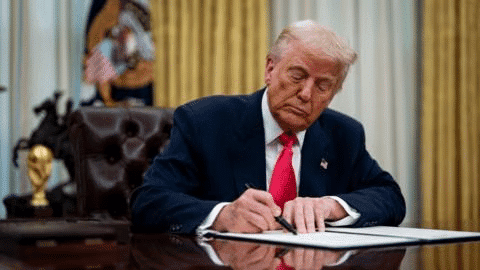 Why in News?
Why in News?
- In March 2025, former US President Donald Trump indicated a willingness to revisit the Iran nuclear deal, which he had previously abandoned during his first term. This change in stance comes in light of shifts in Iran's political and economic situations, as well as evolving dynamics in the Middle East. Trump's recent comments reflect a strategic move towards diplomacy, aiming to tackle nuclear issues while managing intricate regional relationships.
Key Takeaways
- Trump's willingness to renegotiate the Iran nuclear deal marks a significant diplomatic shift.
- The original Joint Comprehensive Plan of Action (JCPOA) was established in 2015 to limit Iran's nuclear capabilities in exchange for sanctions relief.
- Trump withdrew the US from the JCPOA in 2018, citing its flaws and lack of provisions addressing Iran's ballistic missile program.
- Iran has since increased its uranium enrichment in response to the US withdrawal and subsequent sanctions.
- Recent developments indicate a potential for renewed negotiations as Iran's new president acknowledges economic hardships.
Additional Details
- Background of the JCPOA: The JCPOA was intended to limit uranium enrichment to 3.67% for peaceful purposes. In exchange, Iran received economic benefits. However, the deal faced criticism for not addressing other Iranian military activities.
- Impact of US Withdrawal: After the US exited the agreement, Iran began scaling back its compliance, leading to increased uranium enrichment levels and significant economic challenges exacerbated by international sanctions.
- Diplomatic Efforts: By late 2024, Iran's leadership expressed a willingness to engage in discussions with the US, signaling potential pathways for sanctions relief amid ongoing regional tensions.
- Regional Dynamics: The geopolitical landscape has evolved, with improved relations between Iran and some Gulf states, creating a new context for diplomatic negotiations under Trump's renewed approach.
In summary, Trump's proposal to renegotiate the Iran nuclear deal represents a potential turning point in US-Iran relations, characterized by the complexities of regional politics and economic realities. Moving forward, rebuilding trust and addressing key issues such as the JCPOA's sunset clauses will be crucial for any successful agreement.
Wheat and Sugar Crop Outlook for 2025
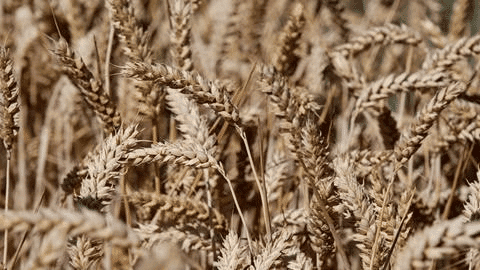 Why in News?
Why in News?
- The agricultural sector in 2025 is experiencing mixed developments regarding key rabi crops, specifically wheat and sugar. As the harvest season approaches, uncertainties concerning yields persist, while challenges in sugar production could influence food inflation rates.
Key Takeaways
- Wheat production shows a significant increase in government-held stocks.
- Sugar production is facing a downturn, with revised lower estimates.
- Weather conditions are critical for wheat yield improvements.
- Rising sugar prices pose inflationary risks.
Additional Details
- Current Wheat Production Status: As of early 2025, the government holds approximately 140 lakh tonnes of wheat stocks, a substantial rise from last year's 75 lakh tonnes. The increased opening stocks for the procurement season offer a buffer against potential shortages, while the government has limited open market sales to stabilize prices.
- Procurement and Pricing Dynamics: In Delhi, wheat prices range from Rs 2,950 to Rs 3,000 per quintal, reflecting an increase from the previous year. To prevent hoarding, the government has implemented stocking limits for traders and retailers. The new crop is expected to arrive in March-April, with prices likely to adjust according to production levels.
- Weather Impact on Wheat Yields: Favorable weather conditions in central India are anticipated to enhance wheat yields by 15-20% compared to last year, provided temperatures remain stable below 35 degrees Celsius during the critical grain-filling stage.
- Sugar Production Challenges: Sugar production is projected to decline, with net estimates at around 220 lakh tonnes, down from earlier projections of 333 lakh tonnes. Factors such as insufficient rainfall in key states like Maharashtra and Karnataka, alongside pest attacks, have negatively affected sugarcane availability.
- Price Trends for Sugar: Ex-factory sugar prices have surged, now ranging from Rs 40.10-41.10 per kg in Uttar Pradesh and Rs 38-38.70 in Maharashtra. This rise is concerning and could exert inflationary pressures, prompting the government to consider stock limits or facilitating imports to manage supply.
In summary, the outlook for wheat in 2025 appears more optimistic due to increased stocks and favorable weather, while sugar production faces significant challenges that could lead to increased prices and inflationary pressures. Monitoring both sectors will be crucial as the year progresses.
 |
Test: Weekly Current Affairs: March 8th to 14th
|
Start Test |
Greater Bengaluru Governance Bill

Why in News?
- The Karnataka Assembly recently enacted the Greater Bengaluru Governance Bill on March 11, 2025. This legislation aims to decentralise power and enhance urban governance in Bengaluru. Deputy Chief Minister DK Shivakumar introduced the Bill, emphasizing its objective to strengthen the city rather than undermine it, despite facing significant opposition from the Bharatiya Janata Party (BJP), which has raised concerns about the potential concentration of power.
Key Takeaways
- The Bill aims to decentralise administrative power in Bengaluru.
- Establishment of the Greater Bengaluru Authority (GBA) for effective governance.
- Proposed restructuring of the Bruhat Bengaluru Mahanagara Palike (BBMP) into smaller units.
- Empowerment of ward committees to enhance community participation.
- New corporations will have financial autonomy, especially in property tax collection.
Additional Details
- Greater Bengaluru Authority (GBA): This authority will manage planning and development within the Greater Bengaluru Area, improving coordination among various civic agencies.
- Restructuring BBMP: The Bill suggests dividing the BBMP into three to seven smaller corporations to increase administrative efficiency.
- Empowerment of Ward Committees: The Bill aims to establish ward committees as essential units of governance, allowing residents to influence local decision-making directly.
- The state government has pledged support for the financial sustainability of the new corporations by covering potential revenue deficits.
The Greater Bengaluru Governance Bill represents a significant shift in the governance structure of Bengaluru, reflecting the city's evolving needs and complexities. While the ruling party advocates for decentralisation, the opposition warns of potential administrative challenges and the risks of centralised power, indicating a critical debate on effective governance versus democratic integrity.
India’s Energy Strategy
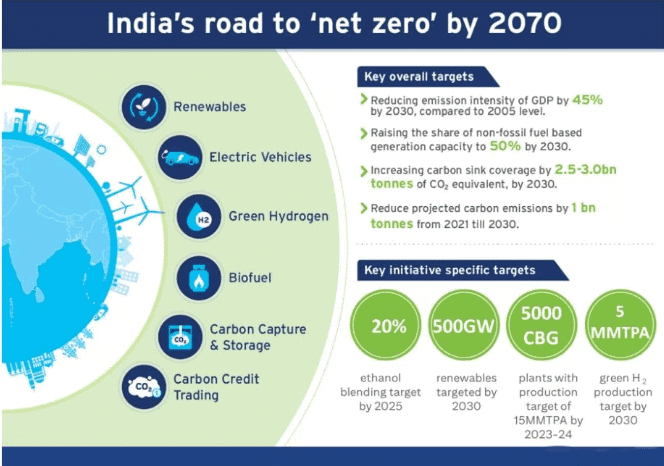
Why in News?
- India is currently enhancing its energy procurement strategy, particularly focusing on increasing imports from the United States. This strategy shift occurs in response to rising global energy demands and ongoing geopolitical tensions. Prime Minister Narendra Modi's recent discussions with U.S. President Donald Trump highlight India's commitment to boost oil and natural gas imports, aiming to secure its energy future while diversifying supply sources.
Key Takeaways
- India is the world's third-largest oil importer, relying on imports for over 85% of its crude oil needs.
- Energy purchases from the U.S. are expected to rise significantly, from $15 billion in 2024 to $25 billion.
- India aims to establish the U.S. as a leading supplier of liquefied natural gas (LNG).
- Domestic production contributes less than 13% to India's energy needs, increasing reliance on imports.
- India is working on developing energy infrastructure and seeks full membership in the International Energy Agency.
Additional Details
- Current Energy Landscape: India is projected to import approximately 234.26 million tonnes of crude oil for the year 2023-24, with a decrease in the import bill to $133.37 billion due to lower international prices.
- Liquefied Natural Gas (LNG) Supply: In 2023-24, India imported 31.80 billion cubic metres of LNG, aiming to increase natural gas consumption from 6% to 15%.
- Strategic Partnerships: The Indian government is focusing on enhancing cooperation with U.S. energy companies to improve its energy security and diversify supply sources.
- Future Energy Roadmap: India is promoting the use of renewable energy sources and alternative fuels like ethanol and biodiesel to reduce dependency on imports.
- Geopolitical Implications: India's energy strategy is influenced by global geopolitical dynamics, particularly in light of the situation in Ukraine, necessitating diversification of energy sources to mitigate risks.
In conclusion, India's evolving energy strategy reflects its commitment to enhancing energy security through diversified imports and increased cooperation with international partners, particularly the United States. The focus on renewable energy and infrastructure development is crucial for achieving long-term sustainability in the energy sector.
75/25 Initiative for Hypertension and Diabetes
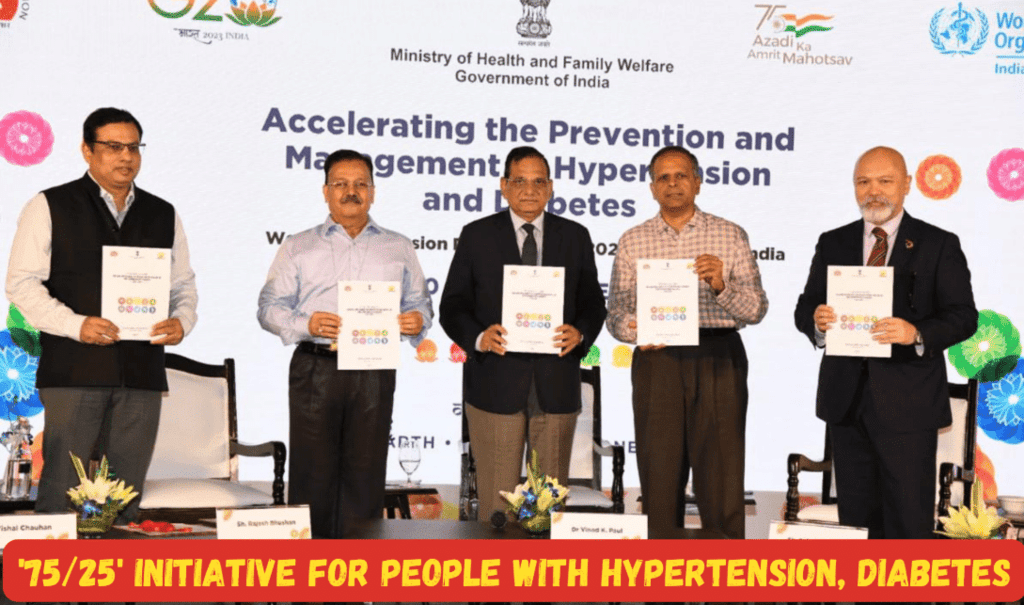
Why in News?
- On March 12, 2025, the Government of India marked significant progress in its "75/25" initiative, launched on World Hypertension Day in 2023. The initiative aims to provide standardized care to 75 million individuals suffering from hypertension and diabetes by December 2025. Currently, 42.01 million individuals have received treatment for hypertension, and 25.27 million for diabetes, showcasing a dedicated effort to tackle the increasing prevalence of non-communicable diseases (NCDs).
Key Takeaways
- The "75/25" initiative aims to offer standardized care to 75 million people by December 2025.
- As of March 2025, treatment has been provided to over 42 million for hypertension and 25 million for diabetes.
- This initiative reflects India's commitment to combating the rising rates of non-communicable diseases.
Additional Details
- Non-Communicable Diseases: These include conditions such as hypertension, diabetes, and various cancers, which present a significant global health burden.
- National Programme for Prevention and Control of Non-Communicable Diseases (NP-NCD): Initiated in 2010, this program aims to reduce NCD incidence through early detection and treatment.
- The NP-NCD employs population-based screening for individuals aged 30 and above, along with opportunistic screening across healthcare levels.
- Teleconsultation services are provided to improve access to healthcare.
- The National NCD Portal is established for monitoring NCD statistics and trends.
- A recent nationwide NCD Screening Campaign aims for 100% screening of individuals aged 30 and above by March 31, 2025.
- The Union Health Ministry has operationalized over 150,000 Health and Wellness Centres (HWCs) to support these initiatives.
The focus on prevention is crucial as the government strives to ensure that at least 80% of diagnosed individuals receive appropriate treatment. Collaboration with the private sector and academic institutions is essential for achieving these goals. A comprehensive approach, including lifestyle modifications, is vital for alleviating the burden of NCDs.
Zero-For-Zero Tariffs
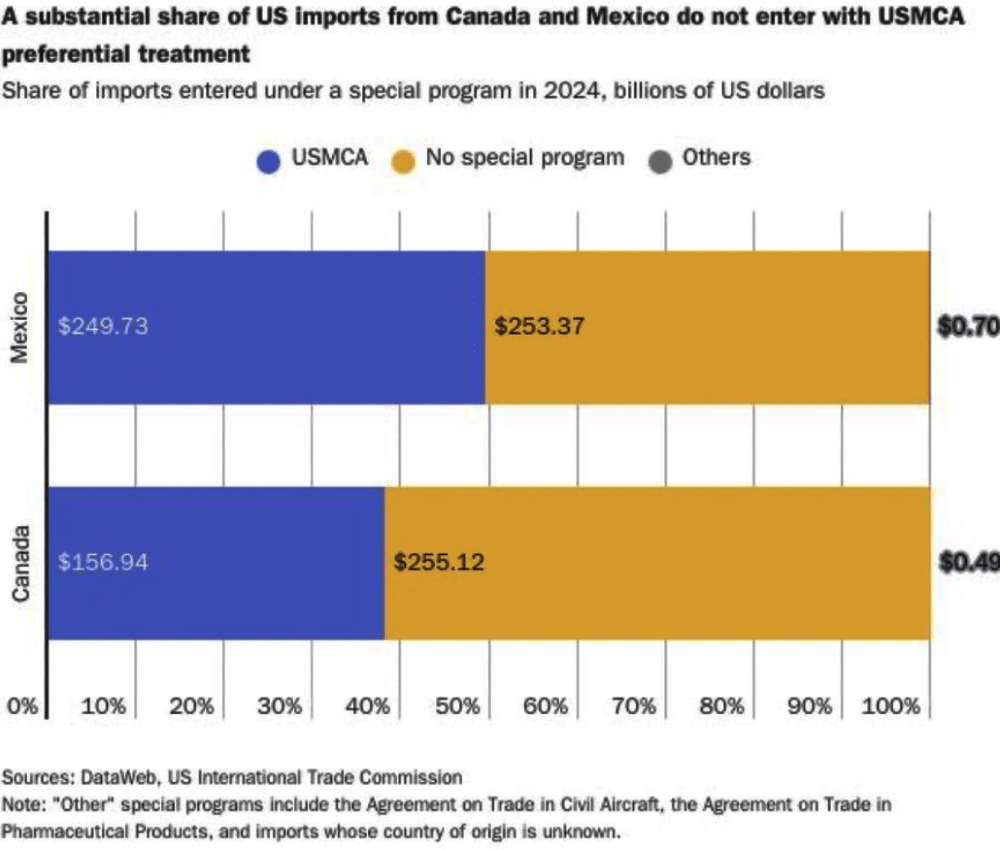
Why in News?
- On March 12, 2025, India is considering new trade strategies with the United States in response to increasing tariff threats. Industry experts are advocating for a zero-for-zero tariff approach, which focuses on removing tariffs on specific products instead of negotiating a comprehensive trade agreement. This approach is believed to improve India's export competitiveness while safeguarding sensitive sectors.
Key Takeaways
- The zero-for-zero tariff strategy involves both nations identifying specific product categories for tariff removal.
- This method aims to bypass extensive trade agreements and blanket tariffs.
- Around 90% of industrial goods traded between India and the US could be eligible for this arrangement.
- India's trade surplus was approximately $46 billion in 2024, which this strategy aims to maintain.
Additional Details
- Zero-for-zero tariffs: This approach allows targeted tariff elimination, which proponents argue can be implemented more swiftly than lengthy bilateral trade agreements.
- The strategy is favorable to India, potentially lessening the adverse effects of US tariffs, while also protecting critical industries like agriculture and automobiles.
- Concerns have been raised regarding broader trade agreements, particularly their risk to India's automobile and agricultural sectors.
- A case study from Australia suggests that decreased tariffs can negatively impact local industries.
- The textile industry supports the zero-for-zero approach due to the "China Plus One" strategy, which encourages diversification away from China, thus enhancing India's competitiveness in US textile markets.
- Despite these benefits, challenges remain as the US shows a preference for broad trade agreements, potentially complicating the zero-for-zero strategy's future.
In conclusion, while the zero-for-zero tariff approach presents a promising avenue for India to enhance its trade relations with the US and protect key industries, significant obstacles need to be addressed to ensure its successful implementation.
 |
Download the notes
Weekly Current Affairs (8th to 14th March 2025)
|
Download as PDF |
US Proposes 30-Day Russia-Ukraine Ceasefire
 Why in News?
Why in News?
- The United States has recently shown strong support for a proposal aimed at establishing a 30-day ceasefire in the ongoing conflict between Russia and Ukraine. This proposal emerged after intensive discussions held in Jeddah, Saudi Arabia, signifying a potential shift in the dynamics of the conflict. The main objective of the ceasefire is to completely stop all missile, drone, and bomb attacks along the entire front line.
Key Takeaways
- The U.S. has proposed a 30-day ceasefire between Russia and Ukraine.
- Military aid and intelligence sharing with Ukraine have resumed.
- Discussions on Ukraine's critical mineral resources are being expedited.
- Humanitarian relief efforts are prioritized during the ceasefire.
- High-level meetings between U.S. and Russian officials are forthcoming.
Additional Details
- Military Aid Resumption: The U.S. has decided to lift the previous pause on military assistance to Ukraine, which is crucial for enhancing Ukraine's defense capabilities against Russian aggression.
- Critical Minerals Development: Both nations have agreed to hasten negotiations regarding the development of Ukraine's critical mineral resources, essential for its economic recovery and energy independence.
- The joint statement emphasized the urgent need for humanitarian relief, including prisoner exchanges and the safe return of displaced civilians.
- Both parties have committed to appointing negotiating teams to facilitate ongoing peace talks.
The proposed ceasefire agreement is pending acceptance from Russia, with U.S. officials preparing to present it to Moscow. Upcoming high-level discussions between U.S. and Russian representatives could significantly impact the future of the conflict. It is important to note that the backdrop of these negotiations includes recent escalations in military actions, particularly Ukraine's largest drone attack on Moscow, which aimed to exert pressure on Russia to agree to the ceasefire. The situation remains precarious, with both sides maintaining high alert status.
Parliament Committee’s Recommendations for Farm Workers’ Welfare
Why in News?
- The Standing Committee of Parliament on Agriculture has introduced a series of recommendations aimed at enhancing the welfare of farm workers in India. Led by Charanjit Singh Channi, the committee emphasizes the importance of recognizing farm labourers in agricultural policies, promoting their rights and welfare.
Key Takeaways
- The proposal to rename the ministry to include farm labourers reflects their essential contributions.
- A National Commission for Minimum Living Wages for Farm Labourers is recommended to address wage disparities.
- There is a concerning trend in decreasing budgetary allocations to the Ministry of Agriculture.
- The committee advocates for a Minimum Support Price (MSP) for all organic crops.
- A free and compulsory crop insurance scheme is proposed for small farmers.
Additional Details
- Ministry Renaming: The committee suggests changing the name of the ‘Department of Agriculture and Farmers Welfare’ to ‘Department of Agriculture, Farmers and Farm Labourers Welfare’ to recognize the vital contributions of farm labourers.
- National Commission: The proposed commission will focus on ensuring fair wages and improved living standards for farm workers, alongside systematic monitoring of agricultural welfare funds.
- Budgetary Concerns: The report highlights a decline in budgetary allocation to the Ministry of Agriculture from 3.53% in 2021-22 to 2.51% in 2025-26, which is alarming given that over 50% of the population depends on agriculture.
- Minimum Support Price: The committee recommends establishing a higher MSP for organic crops to encourage sustainable farming practices.
- Crop Insurance Scheme: This scheme aims to provide a safety net for small farmers with land holdings up to two hectares, enhancing their financial stability and encouraging better farming investments.
If implemented, these recommendations could significantly improve the agricultural sector by recognizing the importance of farm labourers and supporting small farmers, fostering a more equitable environment in agriculture.
|
164 videos|607 docs|942 tests
|
FAQs on Weekly Current Affairs (8th to 14th March 2025) - General Test Preparation for CUET UG - CUET Commerce
| 1. What are the primary measures being taken in the US to control the measles outbreak? |  |
| 2. What is Project Hifazat launched by Punjab, and what are its main goals? |  |
| 3. What are the key features of Trump’s proposed new Iran nuclear deal negotiations? |  |
| 4. What factors are influencing the wheat and sugar crop outlook for 2025? |  |
| 5. What are the main provisions of the Greater Bengaluru Governance Bill? |  |






















